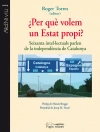This book assembles six chapters by respected and emerging scholars in political science and communication to produce a first sustained look at Twitter’s role in the 2016 US Presidential Election. While much attention has already been paid to Trump’s use of Twitter as a phenomenon—how it helps drive news cycles, distracts attention from other matters, or levies attacks against rivals, the news media, and other critics—there has been little scholarly analysis of the impact Twitter played in the actual election. These chapters apply an impressive diversity of theoretical explanations and methodological approaches to explore how this new technology shaped an American election, and what impact it could have in the future.
Table of Content
1. Politics in 140 Characters.- 2. Less is More Ideological: Conservative and Liberal Communication on Twitter in the 2016 Electon.- 3. Tweet You Very Much: An Analysis of Twitter Discussion during the 2016 Presidential Primary Election.- 4. Candidate Image: When Tweets Trump Tradition.- 5. Tweeting on the Campaign Trail: The When, How, and What Trump Tweeted.- 6. Donald Trump, Naturally: Revisionist Environmental Policy, Global Warming Tweets, and the Unexpected Emphasis of Climate Change in the 2016 Election.- 6. Can We at Least All Laugh Together Now? Twitter and Online Political Humor during the 2016 Election.
About the author
Christopher J. Galdieri is Associate Professor of Politics at Saint Anselm College, USA. He received his doctorate from the University of Minnesota, and is a frequent commentator on New Hampshire and presidential primary elections. He has published in Politics and Policy, New England Journal of Political Science, and Columbia Journalism Review.
Jennifer C. Lucas is Professor of Politics at Saint Anselm College, USA. Her research has appeared in Politics & Gender, American Politics Research, and Social Science Quarterly.
Tauna S. Sisco is Associate Professor of Sociology at Saint Anselm College, USA. Her work has appeared in several edited volumes as well as in Feminist Media Studies and the Journal of Women, Politics, and Policy.












